It can be dreadful to see your monitor not display anything even after you have connected it to a video output port on your PC. In this situation, you will often see a prompt on your monitor saying “Check Signal Cable,” begging the question, “What does check signal cable mean after all?”
A check signal cable is a prompt that tells you the monitor is not receiving video data. This can mainly cause frustration if you already have the video cable plugged into both the monitor and the output device (your PC).
In the following text, I will explain the check signal cable issue and also highlight the primary reasons for its causes. Fortunately, most of the common causes can be fixed easily by yourself.
TABLE OF CONTENTS
So What Does Check Signal Cable Mean?
A Check Signal Cable prompt on your monitor means that the monitor is not receiving the data from the output device to its input port. Often it means that the cable needs to be plugged in correctly.
However, in some bad cases, it can mean more than just that. Sometimes the underlying cause of this issue is more severe than just an unsecured cable.
Causes of Check Signal Cable
There are many underlying causes of the check signal cable issue. Some are simple to fix; others are not.
For instance, if you have a damaged video cable, this issue can easily be fixed by replacing it with a newer one for relatively cheap.
However, if your core hardware like monitor, motherboard, or CPU is defective, then fixing that by yourself would be pretty impossible.
Following the principle of Ockham’s Razor, let us first begin by addressing the most straightforward fixes before moving into the more complicated causes.
1. Your PC is in Sleep or Hibernation Mode
One of the most specific causes of Check Signal Cable is that your PC could be in sleep or hibernation mode.
If you can hear the fans spinning on your PC and the check signal cable issue has been prompted on an otherwise perfectly functioning display, the problem is that your PC is asleep.
This issue can easily be fixed by pressing the Power button on your PC.
If that does not fix the issue, you can restart your PC by turning your PC off first. You can do this by pressing the Power button for a few seconds.
So that you know, any unsaved work will be lost when doing a hard reset.
2. The Video Cable WAS Not Inserted Properly
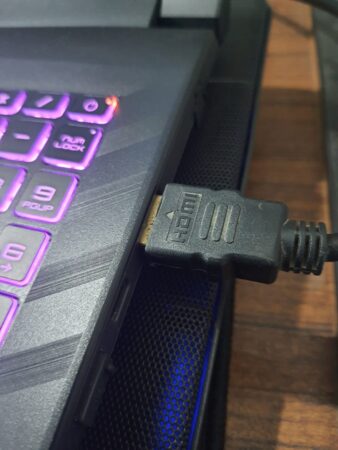
Another simple cause of the Check Signal Cable is a loose connection between the monitor and the PC.
Please ensure the connectors are securely plugged into your PC output and monitor’s input ports.
3. A Damaged Video Cable
A damaged or worn-out video cable can also cause this error.
Please check if your cable is the main culprit using it on a different PC / device.
For instance, if you want to check whether your HDMI cable is damaged, you can also try connecting your PC to your TV (most TVs have HDMI input).
The HDMI video cable will likely be damaged if the TV also shows no signal.
Sometimes there are telltale signs of visible damage to the cable. A cut or a rusty connector means the cable has kicked the bucket.
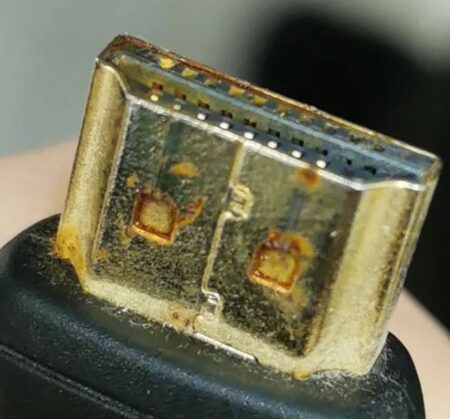
4. A Damaged Video Output/Input Port
This is one of the more troublesome issues that you can come across.
A damaged video output port on your PC or your monitor’s video input port can also cause the check signal cable.
Unfortunately, fixing a damaged port is something that you can do with others.
Fortunately, many PCs and monitors have a combination of video interfaces, i.e., HDMI, VGA, DVI, and DP.
For instance, the motherboard has VGA, DVI-D, HDMI, and DP ports.

So in case the HDMI port on your monitor or your PC is damaged, you can always use any other spare interface. However, you’ll need to get a separate relevant video cable for your desired interface, if you don’t mind.
5. CPU Does NOT have an Integrated Graphics Card
One of the rookie mistakes many make is assuming that ALL CPUs have an integrated graphics card. That is NOT the case.
An Integrated graphics card is a MUST for the video output ports on your motherboard back I/O to work.
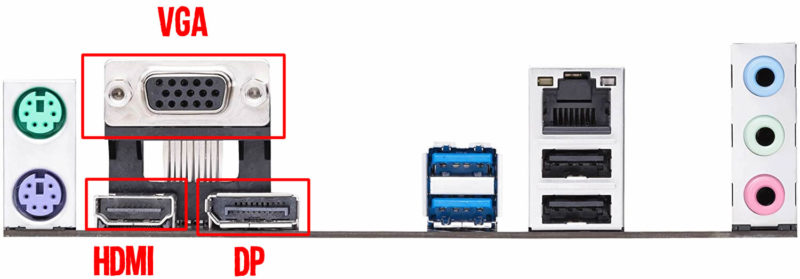
Many CPUs do not feature an iGPU. Intel “F” series CPUs do not feature an iGPU. On the other hand, with AMD, only “G” series CPUs feature an iGPU.
So if your CPU lacks an iGPU, plugging your monitor into any of the video output ports on your motherboard may show Check Signal Cable.
The only workaround is to get a dedicated graphics card or replace your CPU with one that features an iGPU. Often, in this case, people prefer the former.
6. Using Motherboard Video Output Ports with Dedicated GPU Installed
If you have a dedicated graphics card installed, the video output ports on your motherboard often get disabled automatically through the BIOS.
There are good reasons for this. The graphics processing of a dedicated GPU is far more advanced than that of the iGPU on a CPU. Hence, the PC forces you to use the more powerful dedicated GPU for video processing by disabling the motherboard video ports. You CAN enable both if you wish to through BIOS.
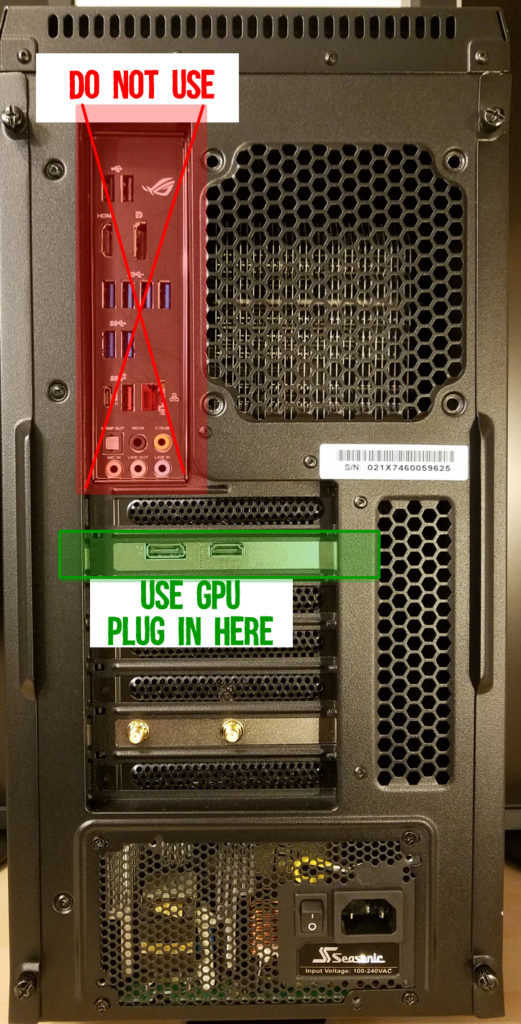
7. Graphics Card is Not Seated Properly
Another reasonably simple issue could be a loose graphics card.
A dedicated graphics card sits on the PCIe slots on your motherboard. If it defeats itself even slightly, it will lose its functionality. Hence any monitor connected to the GPU will stop functioning.
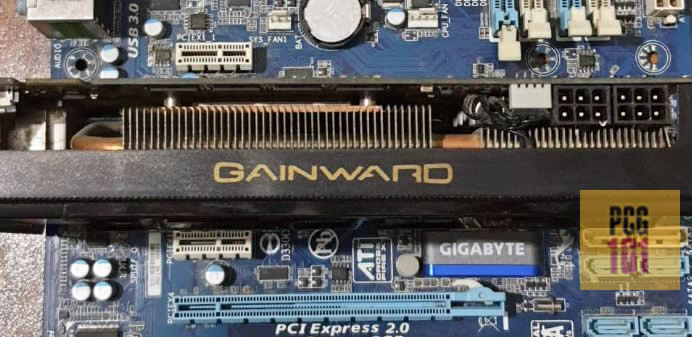
Please open your PC case to troubleshoot and fix this issue. There is also a chassis fastening screw that holds the graphics card in place. Make sure the fastening screw is not loose.
8. Graphics Not in the Right PCIe Slot
A dedicated graphics card has specific requirements for the PCIe slot they need. They either require an x16 or an x8 slot to work.
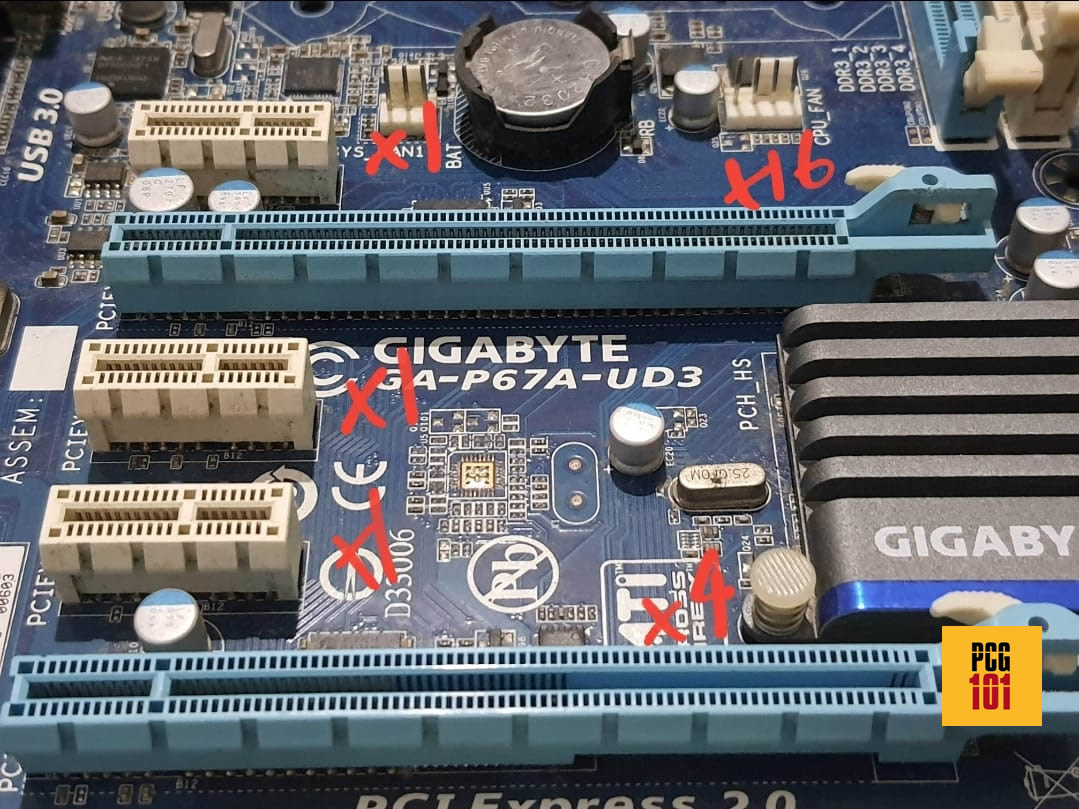
It may not work if you plug a graphics card into a weaker PCIe slot, say an x4 slot.
The image above shows that PCIe slots can look the same but have vastly different functionality. The bottom x16 slot only has four lanes and is unsuitable for graphics cards.
Note some AMD graphics cards CAN work even on an x4 slot. They do take a performance hit, though.
9. Graphics Card Not Connected TO PCIe Power Cables
If you recently installed mid-high-end dedicated graphics, you may have noticed their power connectors.
These power connectors are intended for PCIe power cables coming from the PSU. They HAVE to be connected for the graphics card to function.
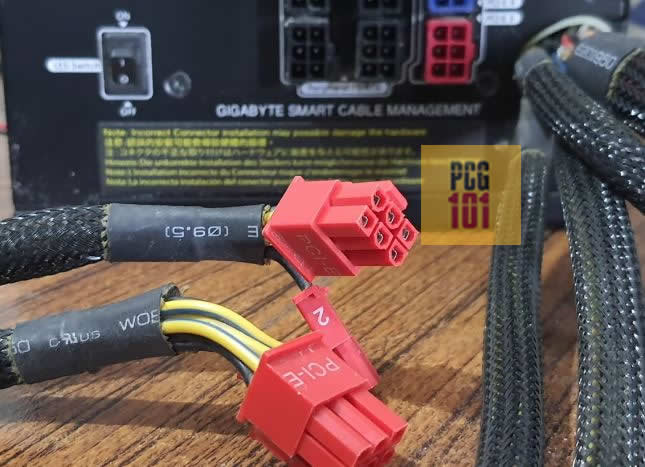
PCIe power cables have to be connected to your dedicated graphics card if it is a requirement.
10. Fault with Other Components
Finally, the Check Signal Cable issue could be caused by another failing component. Here are some of the other miscellaneous considerations:
Damaged PCIe Slot
If your PCIe slot is damaged, your dedicated GPU will NOT work. You can switch the GPU to another PCIe slot with the proper lane count (i.e., x16 or x8).
Dead CMOS Battery
A dead CMOS battery can also cause weird issues on your PC, including not starting at all, resulting in a blank screen.
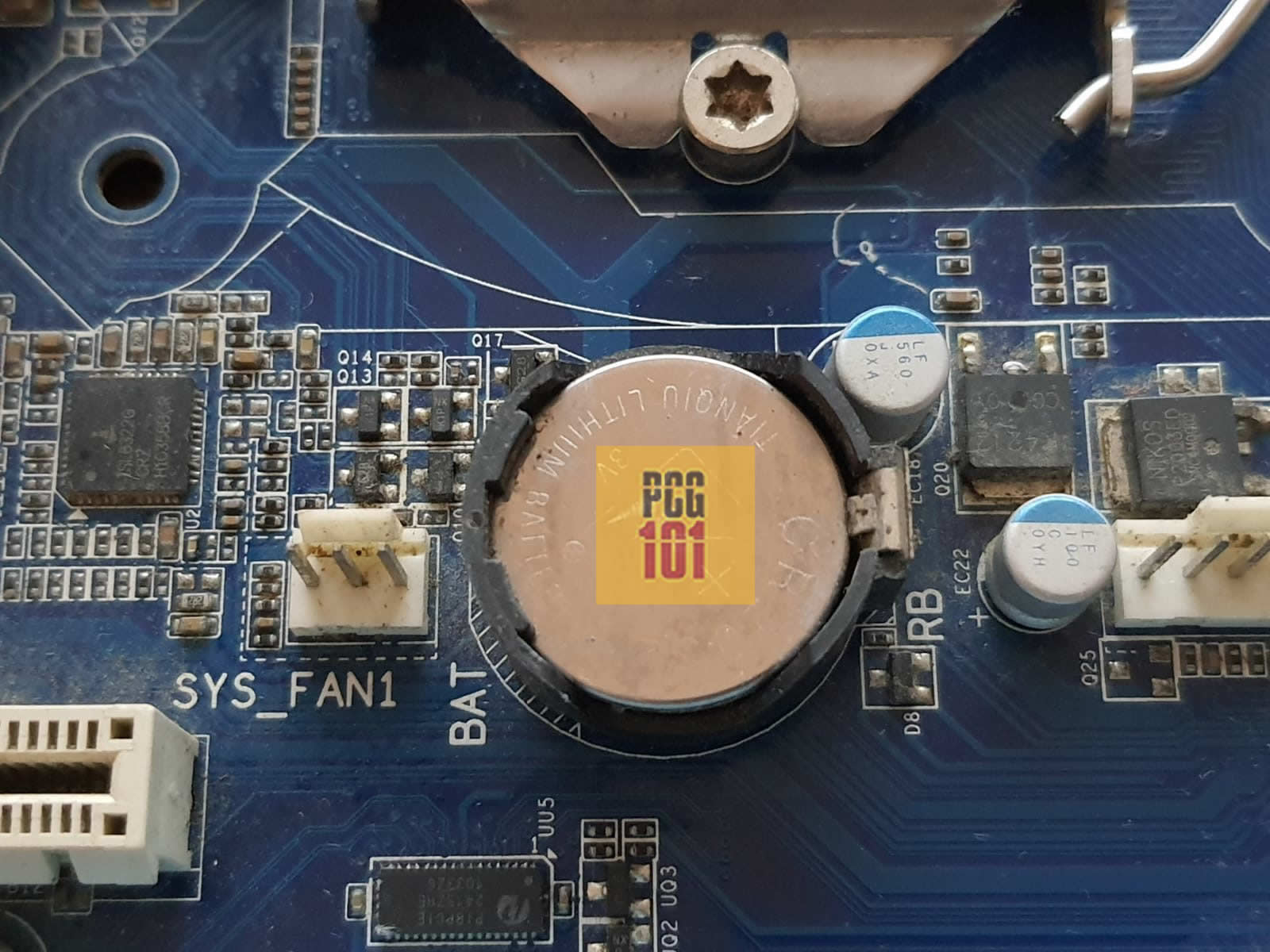
You can reset setting your motherboard by removing the CMOS battery for a few seconds before putting it back in or by replacing it.
The motherboard and CPU Power Cables are Not Connected.
This is for those who have just built their new PC. Ensure that the 24-Pin ATX motherboard cable and the 8-Pin ATX CPU cables from the PSU are connected to the motherboard with the correct orientation.
Misaligned connectors will result in the PC not turning on and, as such, no signal to your monitor.
Weak Power Supply Unit
Again, a point for a newly built system. If you have installed a new powerful graphics card, please ensure your Power Supply Unit has enough rated supply power to support the new GPU.
Dead CPU / Motherboard
A very dreadful situation to be in and a consideration that should be kept to the last.
A dead CPU or a dead motherboard could cause the check signal cable. You can use a different monitor / TV on your PC to verify.
Damaged Monitor
Another tedious issue. You can see this by connecting your monitor to a different PC or output device.
Final Words
Most of the time, the causes for check signal cable are simple and can easily be fixed if you understand the underlying issue.
When troubleshooting issues with the internal hardware or power supply unit, please ensure the PC and the monitor are disconnected from the wall socket.
Frequently Asked Questions
1. Is the “Check Signal Cable” error message a hardware or software issue, and how can I determine the root cause of the problem?
The “Check Signal Cable” error message can be caused by both hardware and software issues. Some common hardware issues include loose or damaged cables, faulty display ports, or damaged graphics cards.
On the other hand, software issues can be caused by incorrect display settings or outdated graphics drivers.
To determine the root cause of the problem, you may need to perform various diagnostic tests such as checking the cables, updating the drivers, or running hardware diagnostics.
2. How can I check the cables and connections associated with the “Check Signal Cable” error message, and what signs should I look for to identify any issues?
To check the cables and connections associated with the “Check Signal Cable” error message, you should first ensure that all the cables are securely plugged into their respective ports.
You should also inspect the cables for any physical damage, such as frayed or bent connectors.
Signs of cable issues may include a flickering or distorted display, no signal detected, or the appearance of error messages such as “Check Signal Cable.”
3. Can software updates or driver installations resolve the “Check Signal Cable” error message, or is it usually a hardware issue that requires replacement parts?
Software updates or driver installations can sometimes resolve the “Check Signal Cable” error message, especially if the issue is related to outdated or corrupt graphics drivers.
However, if the issue is caused by faulty hardware such as damaged cables, ports, or graphics cards, replacement parts may be necessary to resolve the problem.
4. If I continue to experience the “Check Signal Cable” error message after attempting to resolve it, what should I do next, and when should I consider seeking professional help?
If you continue to experience the “Check Signal Cable” error message after attempting to resolve it, you should consider seeking professional help.
A professional technician can perform a more thorough diagnosis of the problem and recommend the necessary repairs or replacement parts.
If the issue is related to hardware, a professional may be required to replace the faulty components, as this can be a delicate process that requires specialized tools and knowledge.
